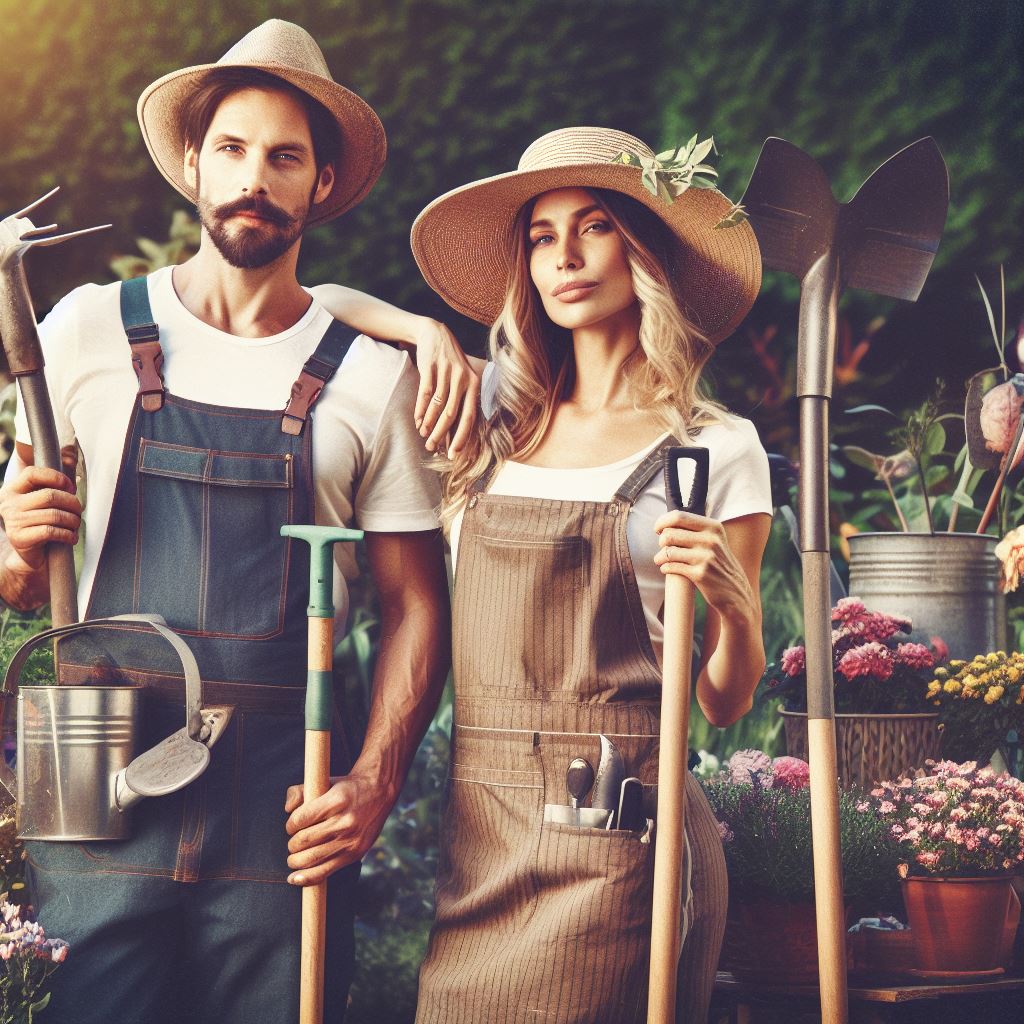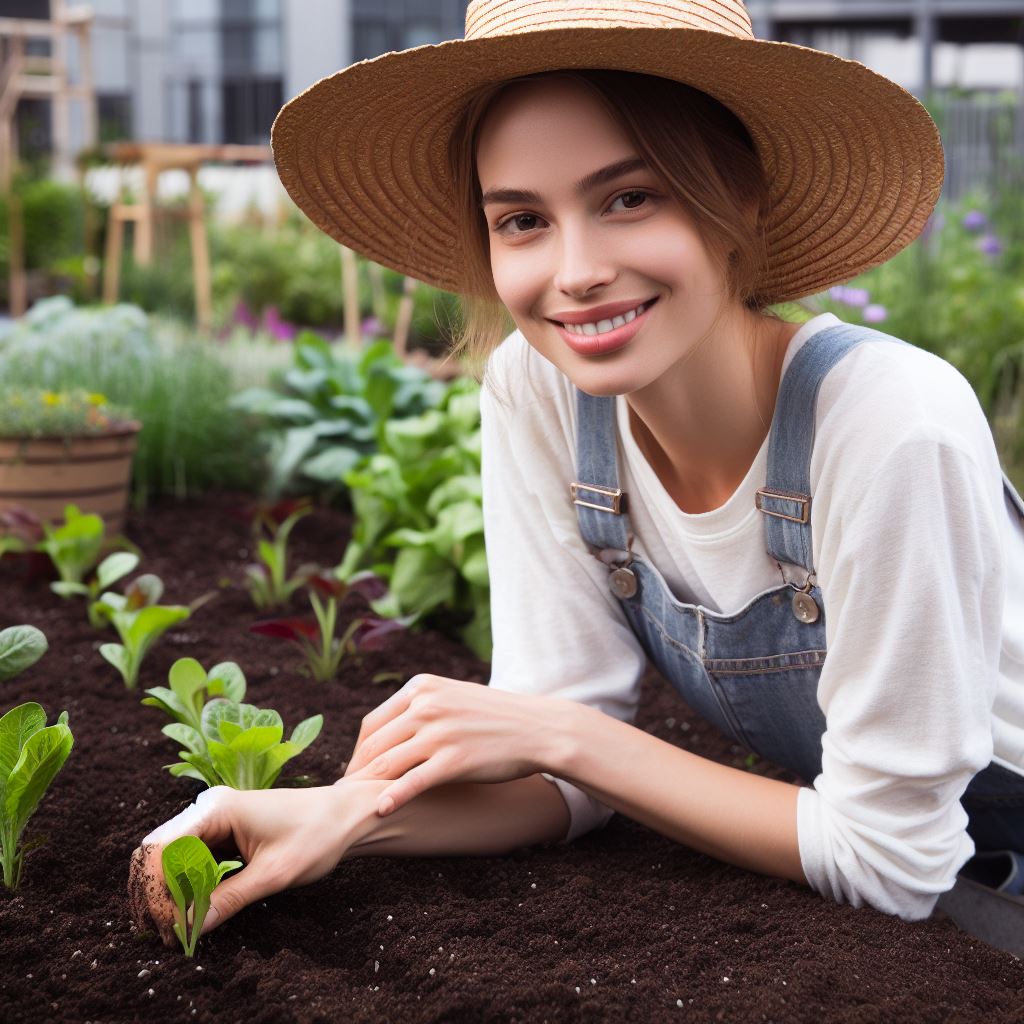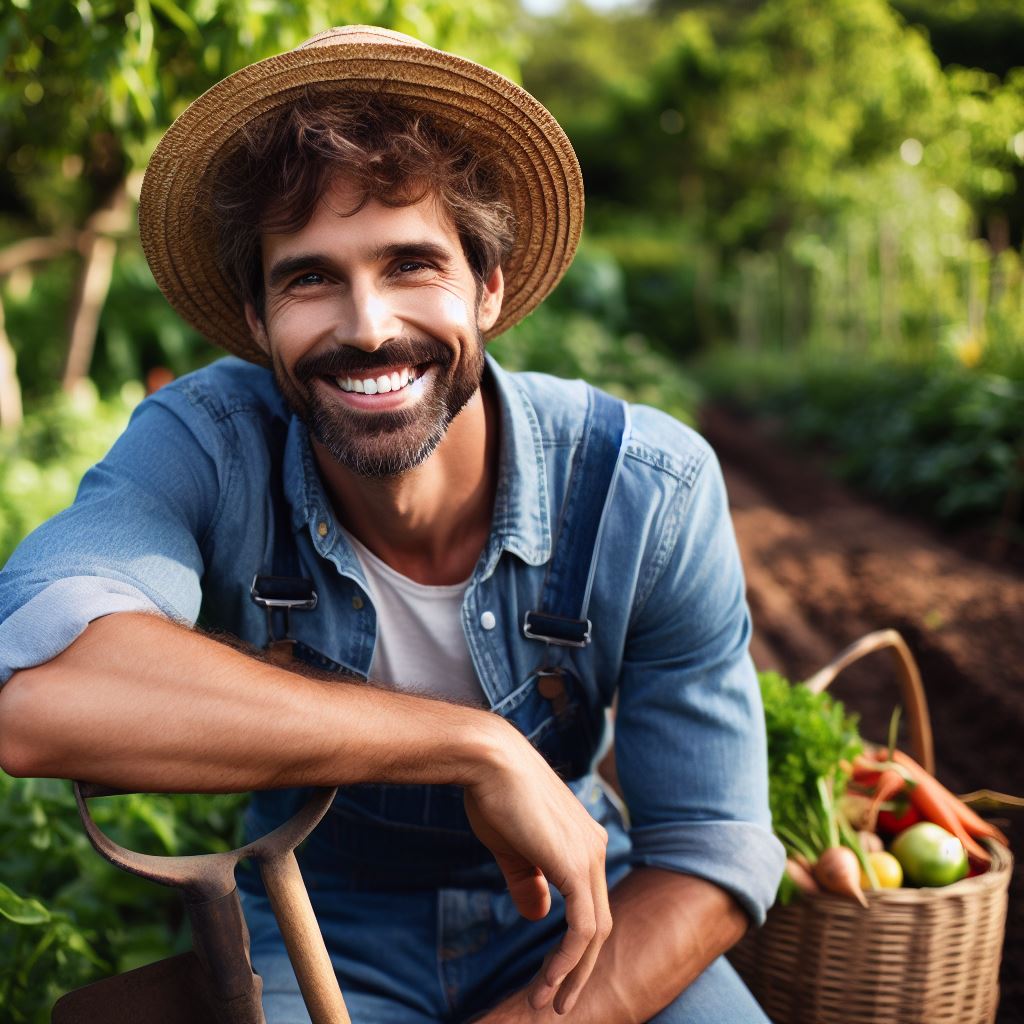Introduction
Container gardening is a popular practice for individuals living in small houses or apartments.
It involves growing plants in pots, containers, or other small spaces rather than directly in the ground.
This form of gardening has gained popularity because it offers a solution for those who lack large garden areas.
One of the main advantages of container gardening is its versatility.
It allows people to grow a wide variety of plants, including flowers, herbs, vegetables, and even small trees.
Regardless of the size of the area, container gardening provides the opportunity to create a green oasis.
In addition to its versatility, container gardening offers several other advantages.
It is relatively easy to maintain, requiring less effort than traditional gardening.
Containers can be easily moved around, allowing for flexible arrangements and the ability to maximize sun exposure.
Furthermore, container gardens require less watering and weeding, making it a convenient option for those with busy schedules.
Container gardening is also a great way to enhance the aesthetics of small areas.
Potted plants can be used to create focal points or add color to outdoor spaces such as balconies, patios, or rooftops.
They can also be placed indoors to bring nature into apartments or small rooms.
In short, container gardening is the ideal solution for individuals living in small areas.
Its versatility, low maintenance, and ability to enhance aesthetics make it a popular choice for those who want to enjoy gardening despite space constraints.
Transform Your Agribusiness
Unlock your farm's potential with expert advice tailored to your needs. Get actionable steps that drive real results.
Get StartedBenefits of Container Gardening
Utilization of limited space
Container gardening is an excellent solution for individuals with limited outdoor areas or apartment dwellers.
It allows people to make the most of small spaces like balconies, patios, or even windowsills.
By using containers, you can grow plants vertically or stack them, maximizing the limited area.
Flexibility and mobility
One of the significant advantages of container gardening is its flexibility in terms of movement.
Containers can be easily moved around to optimize sunlight exposure or protect plants during extreme weather conditions.
You can rearrange your garden according to seasonal changes or personal preferences, offering endless possibilities.
Accessibility for individuals with physical limitations
Container gardening provides an accessible option for people with physical limitations or mobility issues.
By placing containers at an appropriate height, individuals who cannot reach or bend can also engage in gardening activities.
It promotes inclusivity and allows everyone to enjoy the therapeutic benefits of nurturing plants.
Reduced risk of soil-borne diseases
Soil-borne diseases can be a significant concern for traditional gardens, but container gardening helps alleviate this risk.
Using a high-quality potting mix and clean containers eliminates the possibility of diseases present in the soil affecting your plants.
You can also easily control and sanitize the containers, minimizing the chance of infections spreading.
Improved control over pests and weeds
Container gardening allows for better control over unwanted visitors like pests and weeds.
By physically isolating your plants in containers, you can prevent them from being easily reached by insects or harmful organisms.
Furthermore, using organic pest control methods becomes more manageable and effective in a confined space.
Container gardening not only offers a way to beautify small areas but also provides several practical benefits.
Whether you have limited outdoor space, physical limitations, or want more control over your garden, containers are the ideal solution.
Embrace the versatility, flexibility, and accessibility of container gardening to create your green oasis, no matter the size!
Read: Beekeeping: Boosting Your Garden’s Health
Choosing Containers
- Consideration of size and depth: Choose containers that have enough space for the plants to grow.
- Selection of materials: Options such as terracotta, plastic, and wood are commonly used for container gardening.
- Ensuring proper drainage: Make sure the containers have drainage holes to prevent waterlogging.
- Aesthetics and suitability for various plant types: Consider the visual appeal of the containers and whether they are suitable for specific plants.
Choosing the right containers is an essential aspect of successful container gardening.
Not only should the containers be visually appealing, but they should also provide the ideal conditions for plants to thrive.
Here are some considerations when selecting containers:
Consideration of size and depth
The size and depth of the containers play a significant role in the growth and development of plants.
It is crucial to select containers that offer enough space for the plants’ root systems to expand.
Adequate soil volume allows for better water retention, nutrient absorption, and overall plant health.
When choosing containers, consider the mature size of the plants and ensure that the chosen containers can accommodate their growth.
Selection of materials
There are various materials available for container gardening, each with its own advantages and disadvantages.
Terracotta pots, for example, are aesthetically pleasing and provide good air circulation to plant roots.
However, terracotta can be prone to drying out quickly. Plastic containers are lightweight, cost-effective, and retain moisture better than terracotta but may not offer as much breathability.
Wooden containers are natural-looking and provide good insulation for plant roots but require regular maintenance to prevent rotting.
Ensuring proper drainage
Proper drainage is essential to prevent waterlogging and root rot.
Containers should have drainage holes at the bottom to allow excess water to escape.
Alternatively, using a layer of gravel or broken pottery at the bottom of the container can improve drainage.
Ensuring that water can freely flow through the soil helps maintain the right moisture level for the plants.
Aesthetics and suitability for various plant types
Container gardening offers endless possibilities for creating visually appealing displays.
Consider the aesthetic appeal of the containers and how they complement the overall design of your garden or living space.
Additionally, different plants have unique requirements in terms of soil, moisture, and growth habits.
Showcase Your Farming Business
Publish your professional farming services profile on our blog for a one-time fee of $200 and reach a dedicated audience of farmers and agribusiness owners.
Publish Your ProfileSelect containers that cater to the specific needs of the plants you wish to grow.
For instance, shallow containers are suitable for herbs and small vegetables, while deeper containers are better suited for root vegetables and larger plants.
By carefully considering the size, materials, drainage, and suitability of containers, you can create an ideal environment for your plants to thrive in small areas.
Take the time to select containers that not only meet your gardening needs but also enhance the overall beauty of your space.
Read: Sustainable Practices for Small Farms

Selecting Plants for Container Gardening
A successful container garden relies on careful selection of plants that thrive in small spaces.
Consider the following factors when choosing plants.
Assessment of sunlight and shade conditions
Observe the area where you plan to place your containers. Determine if it receives full sun, partial shade, or full shade.
This information will guide your plant selection.
- Full sun plants need at least six hours of direct sunlight per day.
- Partial shade plants tolerate three to six hours of sunlight, preferably during the cooler parts of the day.
- Full shade plants thrive in shaded areas with little to no direct sunlight
Determination of suitable plant varieties
Once you know the sunlight conditions, choose plants that are well-suited for your specific environment.
Consider the following factors:
- Climate: Select plants that are suitable for your local climate and temperature range.
- Hardiness: Choose plants that can withstand the lowest temperatures in your area.
- Water requirements: Consider plants with similar water needs to simplify irrigation.
Consideration of plant size and growth requirements
Container gardens have space limitations, so it’s essential to choose plants that fit both in terms of height and spread.
Consider the following aspects:
- Mature size: Research the maximum height and width a plant can reach to ensure it won’t outgrow your container.
- Root depth: Some plants have deep root systems and may require larger or deeper containers.
- Compatibility: Ensure that you select plants with similar growth requirements to optimize their coexistence.
Mixing and matching plants for visual appeal and compatibility
Container gardening offers an excellent opportunity to create visually appealing arrangements by combining different plants.
Follow these tips:
- Color coordination: Select plants with complementary or contrasting colors to create eye-catching combinations.
- Texture variation: Combine plants with different leaf textures or flower forms for added interest.
- Thriller, filler, spiller: Use the “thriller, filler, spiller” technique: a tall focal point, medium-size fillers, and trailing plants.
- Growth habit: Pair plants with similar growth habits to ensure they don’t overpower or suffocate each other.
By considering these factors, you can assemble a container garden that not only thrives in a small area but also provides visual appeal and harmony between plants.
Read: Farm-to-Table: Growing Your Own Food
Soil and Fertilizer
Importance of using well-draining soil mix
- Well-draining soil is crucial for container gardening as it prevents waterlogged roots.
- It allows proper aeration and prevents the soil from becoming compacted.
- Good drainage ensures that plants receive sufficient water without the risk of root rot.
Enhancing soil quality with amendments
- Adding organic matter such as compost improves soil structure and fertility.
- Amendments also increase nutrient retention and support beneficial microbial activity.
- Well-amended soil provides a balanced nutrient supply for healthy plant growth.
Appropriate fertilizers and frequency of application
- Select fertilizers specifically formulated for container gardening to meet plants’ nutritional needs.
- Slow-release fertilizers offer consistent nutrients over an extended period, reducing the need for frequent applications.
- Follow the recommended application rates to avoid over- or under-fertilizing your plants.
Watering techniques and irrigation systems
- Water container plants thoroughly but ensure excess water can drain out of the containers.
- Check the moisture level of the soil using a moisture meter or your finger to avoid overwatering.
- Irrigation systems such as drip irrigation or self-watering containers can help maintain proper moisture levels.
- Avoid overhead watering as it can lead to fungal diseases and water wastage.
Successful container gardening demands maintaining ideal soil conditions and supplying ample nutrients.
Opt for a well-draining soil mix, preventing compaction and root rot by facilitating proper water and air circulation.
Improve soil structure and fertility with compost amendments for robust plant growth.
In container gardening, choosing and applying suitable fertilizers are critical.
Select fertilizers designed for container plants with the right nutrient ratios.
Utilize slow-release fertilizers for a consistent nutrient supply, reducing the need for frequent fertilization.
Container plants may require more frequent watering, so water thoroughly, allowing excess to drain.
Prevent overwatering by regularly checking soil moisture with a meter or your finger.
If the soil feels damp, delay watering.
Simplify watering with drip irrigation or self-watering containers, ensuring consistent moisture and minimizing water wastage.
Optimal soil and fertilization are pivotal for successful container gardening.
Choose a well-draining mix, enhance with organic amendments, use appropriate fertilizers, and employ proper watering techniques for a thriving small-space garden.
Read: Greenhouse Gardening in Urban Spaces
Container Gardening Tips and Tricks
Adequate spacing and arrangement of containers
- When planting in containers, make sure to provide enough space between them for proper air circulation.
- Arrange the containers strategically to create an aesthetically pleasing display.
- Consider the eventual size of the plants and place taller ones at the back to prevent shading.
Regular monitoring for watering and signs of plant stress
- Keep a close eye on the moisture levels in the containers and water them as needed.
- Check the plants regularly for signs of wilting, yellowing leaves, or insect infestation.
- Adjust your watering frequency depending on the weather conditions and the specific needs of each plant.
Protection against extreme temperatures and weather conditions
- Shield your containers and plants from extreme heat by placing them in shaded areas during peak hours.
- During cold weather, move sensitive plants indoors or provide them with protective coverings.
- Be prepared for heavy rain or wind by securing containers and using sturdy supports for taller plants.
Pruning, trimming, and re-potting as needed
- Regularly prune and trim your plants to control their size, shape, and promote healthy growth.
- As the plants grow, they might outgrow their current containers. Transfer them to larger pots when necessary.
- Remove dead or diseased parts of the plants to prevent the spread of pests or diseases.
Creative solutions for vertical gardening
- Utilize vertical space by hanging containers on walls, fences, or using trellises.
- Choose vining or trailing plants that will beautifully cascade down from elevated containers.
- Use hanging baskets or wall-mounted planters to maximize space and create a stunning visual display.
Container gardening offers endless possibilities for transforming small areas into vibrant and flourishing gardens.
By following these tips and tricks, you can ensure the success of your container garden while enjoying the benefits of gardening in limited spaces.
Happy gardening!
Uncover the Details: Heirloom vs Hybrid: What to Plant?
You Might Also Like: Rooftop Farming: Sky-High Veggie Tips
Common Challenges and Solutions
Over or under-watering issues
- Use a moisture meter or check the soil’s moisture level regularly to avoid over or under-watering.
- Adjust watering frequency depending on weather conditions and plant needs.
- Provide proper drainage by using containers with drainage holes or adding a layer of gravel at the bottom.
- Mulch the soil surface to retain moisture and prevent evaporation.
- Consider using self-watering containers or DIY drip irrigation systems to ensure consistent watering.
Nutrient deficiencies and excesses
- Use a high-quality potting mix enriched with organic matter to provide essential nutrients to plants.
- Monitor for signs of nutrient deficiencies, such as yellowing leaves or stunted growth, and adjust fertilization accordingly.
- Avoid over-fertilization as it can cause nutrient excesses, leading to burns or nutrient imbalances in plants.
- Use slow-release fertilizers or organic fertilizers to provide a steady supply of nutrients over time.
- Regularly test the soil’s pH level and adjust it using appropriate products to ensure optimal nutrient absorption.
Root-bound plants and re-potting strategies
- Check for signs of root-bound plants, such as roots growing tightly around the container or appearing on the soil surface.
- Gradually move plants to larger containers to prevent shock and ensure a smooth transition.
- Gently loosen the outer roots before re-potting to encourage healthier root growth.
- Trim any damaged or overly long roots before placing the plant in its new container.
- Provide adequate spacing between plants in larger containers to avoid overcrowding and competition for resources.
Dealing with pests and diseases in container gardens
- Regularly inspect plants for signs of pests, such as chewed leaves, sticky residue, or visible insects.
- Use organic pest control methods, such as neem oil, insecticidal soaps, or introducing beneficial insects.
- Remove infested plants or heavily infested leaves to prevent the spread of pests.
- Practice good sanitation by cleaning containers, tools, and work areas to minimize disease transmission.
- Rotate plant varieties and avoid overcrowding to reduce the risk of diseases and pests.
By being aware of and addressing these common challenges, container gardeners can ensure successful and thriving plants even in small areas.
Remember to continuously monitor and adjust your gardening practices to cater to the specific needs of your plants and conditions.
Happy container gardening!
Success Stories and Inspirations
Showcasing unique container garden designs
- Introducing the Hanging Basket Wonderland: A mesmerizing display of colorful flowers suspended in the air.
- Creating a Vertical Herb Garden: A space-saving solution that brings fresh flavors to your fingertips.
- Unveiling the Fairy Tale Garden: A mini garden filled with whimsical elements and plants fit for a storybook.
- Featuring the Succulent Paradise: A collection of diverse succulents arranged in an artistic and eye-catching manner.
- Exploring the Zen Garden: A serene oasis in the midst of a busy city, providing tranquility and calmness.
Examples of thriving plants in small spaces
- The Resilient Lavender: Flourishing in a compact container, lavender adds elegance and a soothing aroma to any space.
- The Colorful Geraniums: These vibrant blooms thrive in limited areas, bringing joy and life to balconies and windowsills.
- The Versatile Tomatoes: Growing tomatoes in containers allows urban gardeners to enjoy fresh, homegrown produce.
- The Hardy Dwarf Citrus Trees: These small yet productive trees bear delicious fruits and flourish in pots or small gardens.
- The Beautiful Orchids: Delicate and stunning, orchids can thrive indoors and add a touch of elegance to limited spaces.
Testimonials from container gardening enthusiasts
- “Container gardening has transformed my small balcony into a lush, peaceful sanctuary.” – Sarah, Chicago
- “I never thought I could grow my own vegetables until I started container gardening. It’s a game-changer!” – Mark, New York
- “My container garden has become my pride and joy. It brings me happiness and relaxation every day.” – Emily, San Francisco
- “I love how container gardening allows me to express my creativity and experiment with different plant combinations.” – Lisa, London
- “Container gardening has made me appreciate the beauty of nature even in the heart of the city.” – Carlos, Tokyo
Container gardening is not just a practical solution for limited spaces, but it also offers endless possibilities for creativity and beauty.
These success stories and inspirations prove that anyone can create a stunning oasis no matter the size of their area.
Showcase Your Farming Business
Publish your professional farming services profile on our blog for a one-time fee of $200 and reach a dedicated audience of farmers and agribusiness owners.
Publish Your ProfileWith the right plant selection and design, even the smallest balcony or window ledge can be transformed into a vibrant and thriving garden.
So why wait? Start your own container garden today and experience the joy and satisfaction of nurturing plants in a small space.
Get inspired by unique designs, discover thriving plant examples, and hear testimonials from enthusiastic container gardeners.
Your journey towards a green and beautiful haven awaits!
Conclusion
Recap of the benefits and advantages of container gardening
Container gardening offers numerous benefits, such as versatility, convenience, and mobility.
It is suitable for small areas due to its space-saving nature. Container gardens can be easily customized and can fit in any corner or balcony.
They require less maintenance and are ideal for people with limited time.
Container gardens can be a source of relaxation and a connection to nature.
Encouragement to start container gardening in small areas
If you have a small area and a desire to garden, container gardening is the perfect solution for you.
It is a great way to enjoy the benefits of gardening without the need for a large backyard.
With container gardening, you can grow a variety of plants, flowers, and vegetables even in the smallest spaces.
So don’t let limited space hold you back from gardening and start your container garden today!
Further resources and recommended plant varieties for beginners
To help beginners get started with container gardening, there are many resources available online and at local gardening centers.
Websites like Gardening Know How and The Spruce provide valuable tips, guides, and advice on container gardening.
As for recommended plant varieties, for beginners, it is best to start with easy-to-grow plants such as herbs like basil, mint, or thyme, flowering plants like petunias or marigolds, and vegetables like cherry tomatoes or lettuce.
Container gardening is the ideal solution for small areas.
It offers numerous benefits and advantages, including versatility, convenience, and space-saving nature.
Starting a container garden in small areas is encouraged as it allows individuals to experience the joys of gardening.
Beginners can find further resources and recommended plant varieties to help them get started in their container gardening journey.
So go ahead, start your own container garden and enjoy the beauty of nature in your small space!




